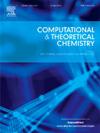Integral equation theory study of the two dimensional SRSS model
IF 3
3区 化学
Q3 CHEMISTRY, PHYSICAL
引用次数: 0
Abstract
The integral equation theory of liquids was used to study anomalies in the purely repulsive core-softened 2-dimensional system. The thermodynamics and structure was assessed and anomalous regions determined. In the model, the particles are repelling each other through an isotropic core-softened potential with two characteristics lengths. The first is a hard core with one diameter and the second a soft corona at larger distance. Integral equation theory, based on the Ornstein–Zernike equation, is a fast method to study phase diagrams and thermodynamics. Beside the Ornstein–Zernike that connects total and director correlation functions another relations is needed called closure relation which cannot be obtained in an exact form and it is always some approximation. Various approximations exist with each of its own advantages and disadvantages. In this work we extensively tested hyper-netted chain, Percus–Yevick, Kovalenko–Hirata, Rogers–Young, modified Verlet and soft mean spherical closure. Convergence domain was established for each closure. Rogers–Young Verlet closure gave best results for this model where it converges.

求助全文
约1分钟内获得全文
求助全文
来源期刊

Computational and Theoretical Chemistry
CHEMISTRY, PHYSICAL-
CiteScore
4.20
自引率
10.70%
发文量
331
审稿时长
31 days
期刊介绍:
Computational and Theoretical Chemistry publishes high quality, original reports of significance in computational and theoretical chemistry including those that deal with problems of structure, properties, energetics, weak interactions, reaction mechanisms, catalysis, and reaction rates involving atoms, molecules, clusters, surfaces, and bulk matter.
 求助内容:
求助内容: 应助结果提醒方式:
应助结果提醒方式:


